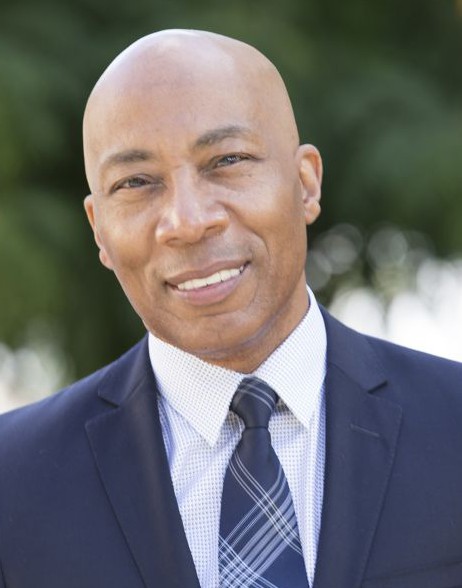
Just over six weeks since his appointment as vice president of the Division of Student Affairs at California State University, Dominguez Hills (CSUDH), William Franklin is already developing a campus-wide and collaborative approach to enhancing the way the division serves students, both on and off campus.
Among the initial changes Franklin made to the division was its name, back to the Division of Student Affairs. Years ago, when CSUDH was focusing heavily on increasing and stabilizing enrollment at the university, the name was altered to the Division of Enrollment Management and Student Affairs.
“The campus needed to focus on enrollment at the time because we weren’t hitting our enrollment targets and students weren’t being retained at high rates. So the two names were merged to emphasize a strong focus on enrollment management,” according to Franklin. “Now enrollment is very stable and student persistence and graduation rates are moving in the right direction. So, even though enrollment management is very important and a major pillar in the division, we don’t think the name needs to be in the title.”
Franklin added that since the division has always had a broad focus on students through its more than two dozen departments and units, the Division of Student Affairs name is a much better fit.
“We are unique compared to many other entities on campus. What happens in the classroom should be a critical focus for the university. That’s why students come, many of whom are the first in their family to go to college. They want to attain a quality degree so they can make a difference in their family and their community,” he said. “But we also know that students spend a finite amount of time in the classroom, so student life and student experiences are also very important. That’s where Student Affairs comes in–we endeavor to bridge and add value to the student experience inside and outside the classroom.”
Engaging a largely commuter campus “outside the classroom” has its challenges, which Franklin said the division has begun to take head on.
“We need to find a way to say, ‘We know you commute, now how can we make your experience more meaningful while you are here?’” Franklin said. “So one of my major focuses will be on how we begin to really work with students who commute. It’s really important for us to connect more frequently with them, learn more about their challenges and tailor our programs and services to address them.”
Franklin and other Student Affairs staff members have already met with such groups as Associated Students, Inc., student representatives of the Loker Student Union, and student clubs and organizations to get direct feedback to better enable the division to enrich the college experience for CSUDH students.
“When students join organizations, attend events and utilize services available to them that are co-curricular, such as new student orientation, a career fair or advising, we want to know how they are impacted, what did they learn, and how we can grow or tweak the programs and services to make them better,” he said. “We also need to find new and intentional ways to have more robust conversations with faculty, staff, students, and community members to help make their experiences on campus more complete, richer and engaging.”
Recently, Student Affairs attended a retreat with the Division of Academic Affairs, which was hosted by Ellen Junn, CSUDH provost and vice president for Academic Affairs. The retreat, in large part, focused on how the two divisions can work together to enhance student life and involvement.
“The beauty about the joint retreat and inviting Academic Affairs to our [Second Annual Fall Forum next month on Sept. 23] is you have faculty and financial aid professionals talking, and deans conferring with student life professionals–all committed to finding ways to work together more effectively. We want to know and understand the student experience and partner with all stakeholders around that,” said Franklin.
“Our goals and objectives are focused on many similar types of student learning, such as leadership. A student can learn leadership in a classroom using great textbooks, research findings, and of course through the influence of our exceptional faculty,” he said. “But they can also learn leadership concepts and principles at events such as our annual student life leadership retreat. “We’re working on how we can balance what those types of learning outcomes are and how we can reinforce them in both areas. Approaches like these will pay dividends for our students in the long run.”